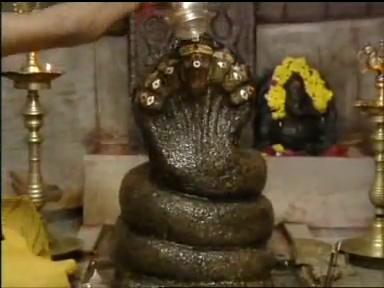Ardhapadmabandhasana (half lotus bound pose) |  |
 | |  |
 | Ardha - half; padma - lotus; bandha - bind/lock
In this asana, one foot is placed on the other thigh in half-lotus pose. One arm then catches hold of the toes of the folded leg from behind the waist, resulting in a "bind" or "lock", hence the name.
|  |
 | Taking the asana positionInitial Position - Sitting Position
| 1. | Bend the left leg and place the top of the left foot on the right thigh. |
| 2. | Wrap the left arm around the back of the waist and grab the toes of the left foot. |
| 3. | Reach the right arm forward to catch the toes of the right foot. |
| 4. | Inhale and while exhaling, bend the torso from the hips and try to touch the forehead to the knee. Breathe normally. |
|
|  |
 | The asana positionIn this position, the left foot is placed in half-lotus on the right thigh. The left arm is wrapped around the back of the waist and grabbing hold of the left toes. The right arm is extended towards the right foot, ideally grabbing hold of the right toes, and the elbow resting on the ground. The torso is folded forward, with the forehead ideally touching to the knee/shin.
|  |
 | Releasing the asana position
| 1. | Exhale and while inhaling, lift the head and straighten the torso. |
| 2. | Release both hands and return them to the sides of the hips on the floor. |
| 3. | Release the left foot and come back into sitting position. |
Practice on the other side, with the right foot on the left thigh.
|  |
 | Anatomical focus |  |
 | AwarenessOn relaxing the back muscles or on the massage of the left foot on the right side of the abdomen.
|  |
 | Do's
| 1. | Bend from the hips and keep the back straight when bending forward. |
| 2. | Keep the knee of the folded leg as close to the ground as possible. |
|  |
 | Dont's
| 1. | Bend the knee of the extended leg. |
|  |
 | Benefits
| 1. | The foot of the bent leg pressing against the abdomen gives an intense massage to the abdominal organs, which helps to stimulate intestinal peristalsis and alleviates constipation. |
| |
| 2. | Stretches the hamstrings. |
| 3. | Increases flexibility in the hip joints. |
| 4. | Removes excess weight from the abdominal and pelvic areas. |
|  |
 | Therapeutic application
| 1. | Disorders of the uro-genital system |
| 2. | Menstrual disorders |
| 3. | Sluggish liver |
| 4. | Diabetes |
| 5. | Colitis |
| 6. | Kidney complaints |
| 7. | Bronchitis |
| 8. | Eosinophilia |
| 9. | Constipation |
|  |
 | Precautions & contra-indications
| 1. | Those suffering from slipped disc or sciatica should avoid this asana. |
|  |
 | DurationThe asana should be held for at least 30 seconds to experience the benefits. With practice, the duration can be increased to 2 minutes on each side.
|  |
 | Variations & tipsIf it is not possible to place the top of one foot on the other thigh, it is ok to place the sole of the foot next to the inner thigh of the other leg.
Advanced students should try to keep the bent knee on the ground and touch their forehead to the extended knee. If the extended arm is holding on to the toes of the extended leg, they should try to place the elbow of the extended arm on the ground.
|  |
 | Preparatory poses
| 1. | Ardha Paschimottanasana |
| 2. | Paschimottanasana |
| 3. | Ekapadhastasana |
|  |
 | Follow-up poses |  |
 | Ancient texts |


కామెంట్లు లేవు:
కామెంట్ను పోస్ట్ చేయండి